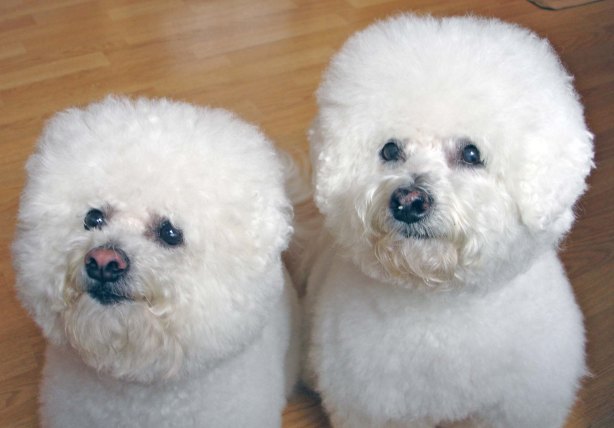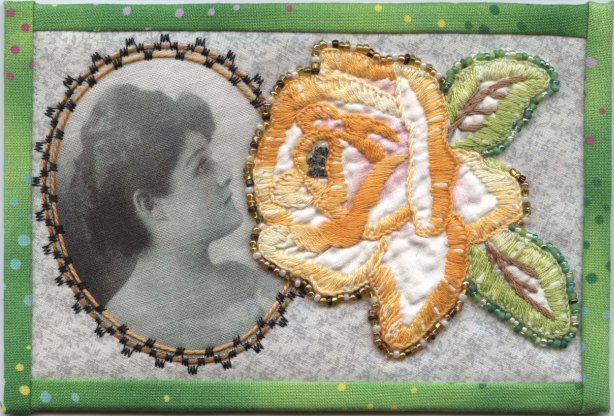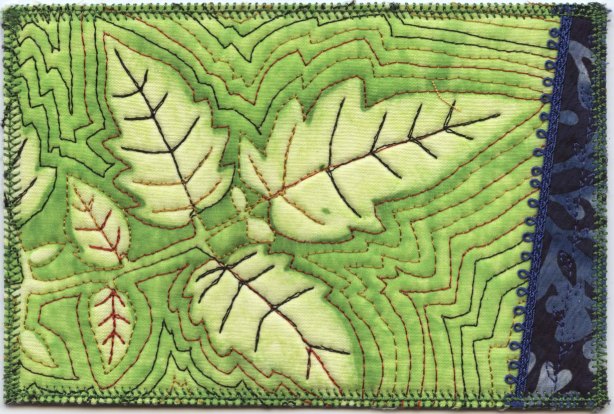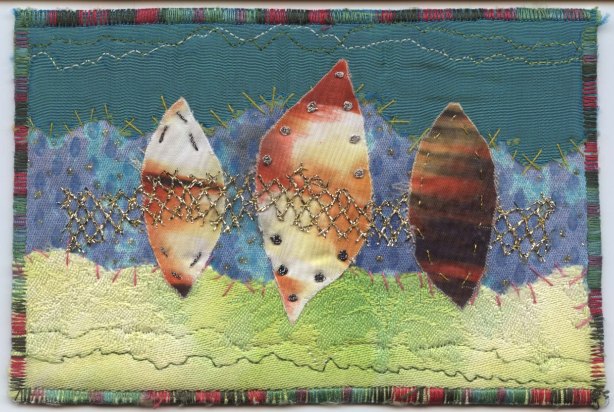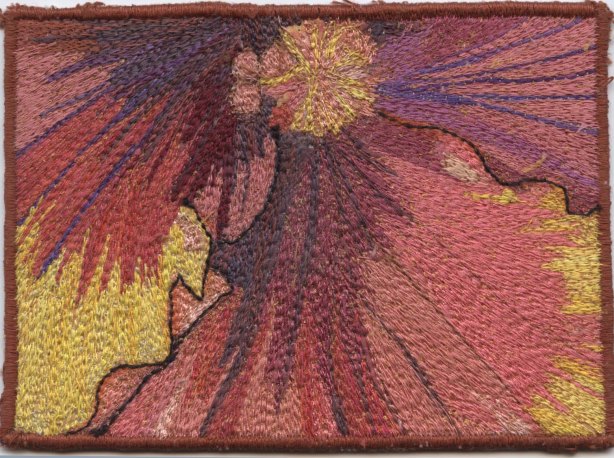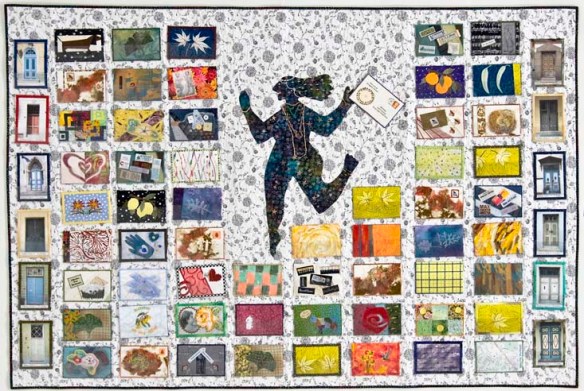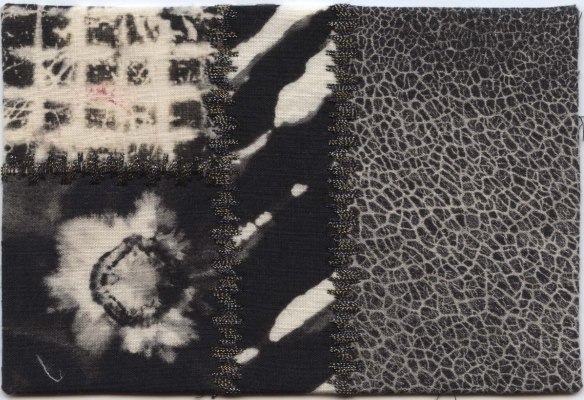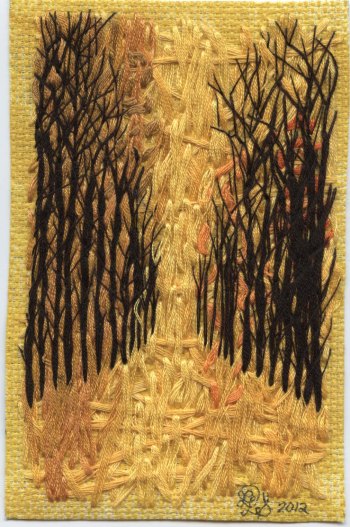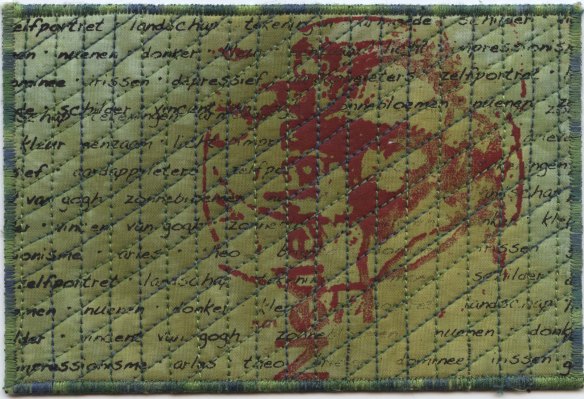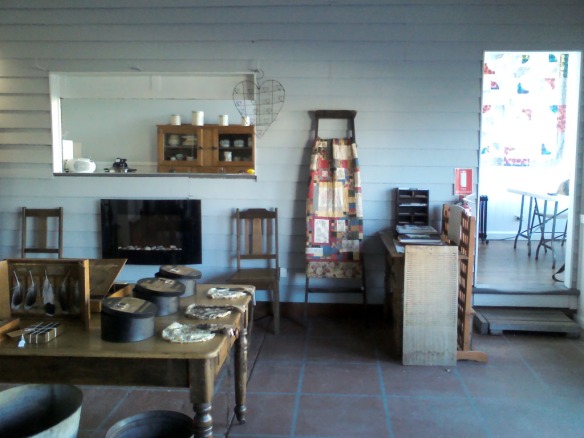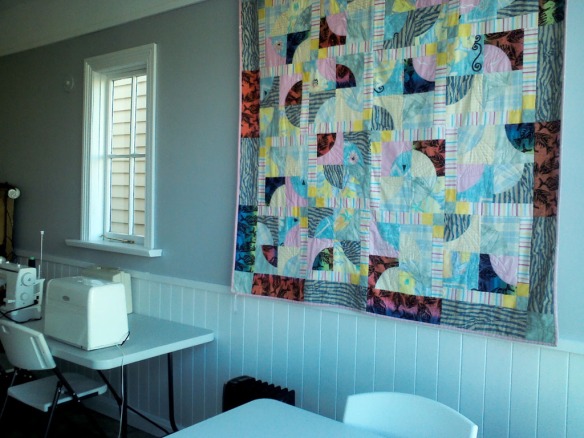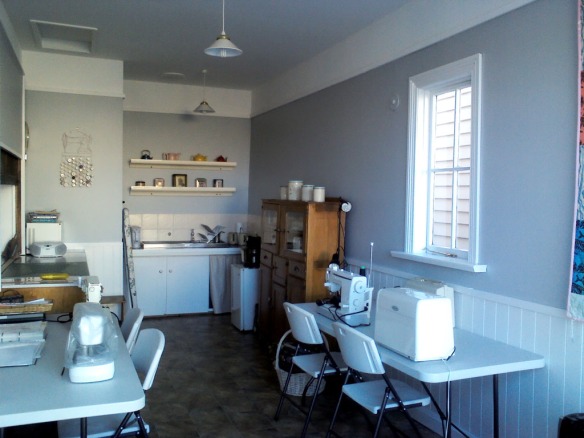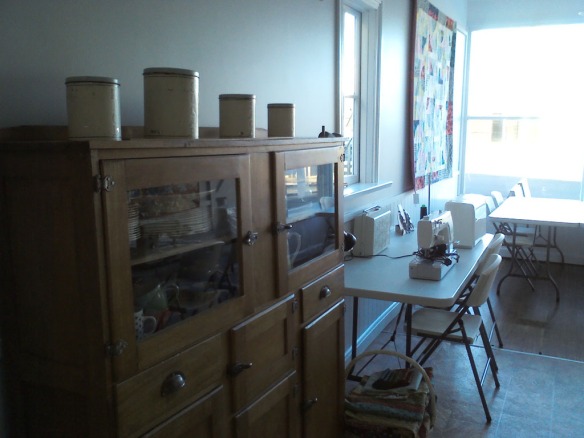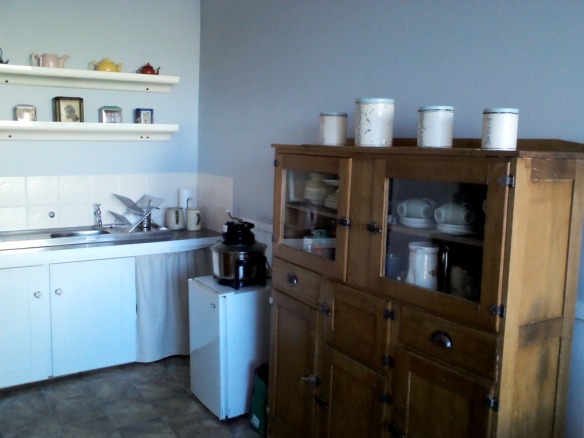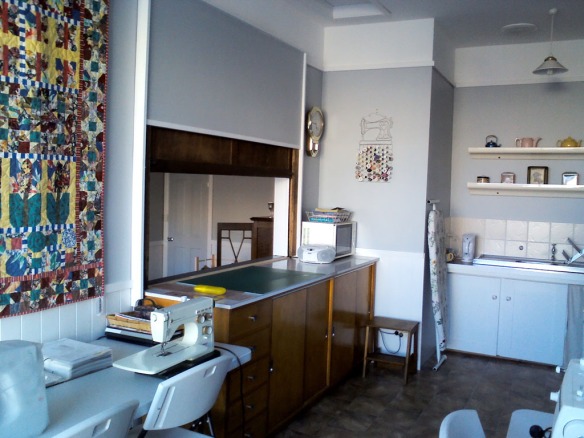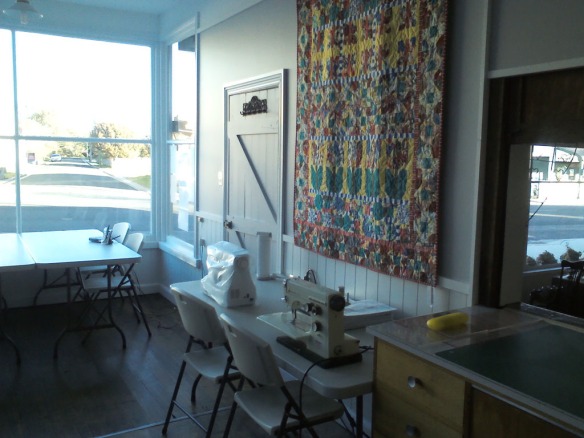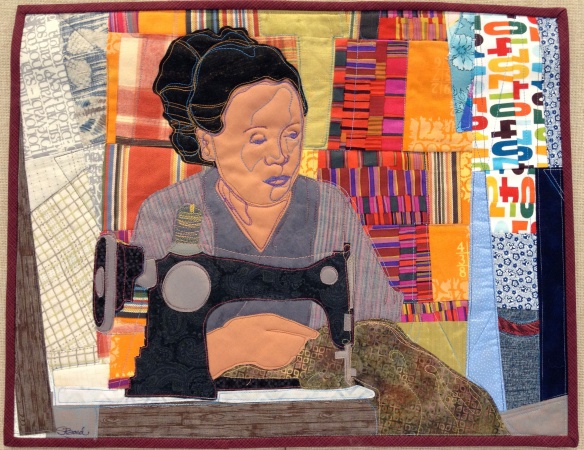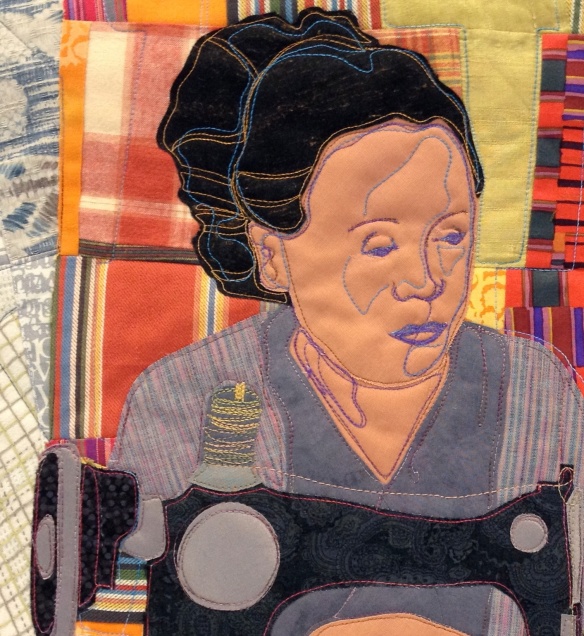Franki Kohler is the founder, organizer and fearless leader of Postmark’d Art which began in 2004. She is also the author of the book Fast, Fun and Easy Fabric Postcards (C&T Publishing, 2006). She lives in Oakland, CA.
Note: Hover cursor over images for more information; click on an image for a larger view.
Tell me a little about yourself.
When I was young, my grandmother lived with my family. She was always making her mark. Whether she was tatting an edge for a handkerchief, finishing a pillow case with a fine crochet lace or embroidering a design for a pillow, she was creating a legacy of fine hand work that her children and grandchildren would cherish. Her mantra was, “If it’s worth doing, it’s worth doing well.” Naturally, she shared her skills with me and I acquired a true appreciation for working with needle and thread.
Here is grandma on her wedding day. You can barely see the rose at the neckline of her dress. I’ve ‘rescued’ a bit of her broderie perse work — another rose.
My introduction to quilting was serendipitous. I attended a fund-raiser for a historic house in a nearby city during December 1981. Each room in the house had been decorated by a different designer. One of the bedrooms was decorated lavishly with quilts. They were on the bed, the wall, hanging over a screen, stacked in baskets — I was dazzled. I had been wanting to learn how to quilt for some years so I took this as a sign that it was time to jump in. The designer’s business card indicated that she owned a quilt shop nearby. Kismet! I took my first quilting class in early 1982. My instructor, Diana McClun (who later closed her shop to found Empty Spools Seminars), was such an inspiration that even though I was working full-time then, I completed two quilts in that year. The second quilt was a Christmas sampler. Diana thought it was good enough to be a part of an exhibit she curated in 1983 titled American Christmas Quilts at the San Jose Museum of Quilts and Textiles. How encouraging was that?
Why did you organize Postmark’d Art?
I was interested in learning about the new techniques and products that were on the quilting market but I knew that experimenting with the bed-quilt format wasn’t going to be practical. I was searching for a small format for experimentation, a format that required a minimum of time and material investment to teach me the new skills I wanted to learn. Now I could not only learn by making postcards, I could also learn by receiving them and seeing the work of other artists.
When did you start making postcards?
My postcard adventures began when a friend handed me the summer 2004 issue of Quilting Arts Magazine. That issue contained an article about a group of artists who were making and exchanging fabric postcards. They called themselves Art2Mail. This was my “Eureka!” moment.
I couldn’t get to my computer fast enough to learn more. Art2Mail didn’t have an opening with their group at that time but they had enough interest from readers of the article that they spun off a group of new traders. I was asked to be the moderator for the new group. We called ourselves Postmark’d Art. I still smile when I remember Laurie Walton’s suggestion for the name: She said that in her part of the country (Maine) R’s and E’s are optional.
How do you display your postcards?
I have groups of postcards on small display stands throughout my house. I like to rotate the cards. I also have a quilt that I made for displaying postcards. This is Princess Bliss of the Land of 4 x 6. She holds 70 postcards altogether and she hangs out with me in my studio.
What have been some of your favorite themes?
We always have a “No Theme” group for trading and for many years that’s the group I traded with.
Recently I joined the “van Gogh” trade group and I was so happy I did! The treasures I got in the mail will be cherished for years to come. Here are a couple of them:
Meta created a thermofax screen using a Dutch postage stamp and words that she associates with van Gogh.
Tell me about your other interests.
I am an avid gardener, enjoy studying piano and traveling with my husband, David. I also relish daily walks with my boys, Taylor and Mendelssohn. 